Swan D1010-IV Review

Swan is a branch of Chinese driver OEM Hi-Vi, known among millennial audiophiles for being the driver supply for the well regarded Overnight Sensations DIY kit. I'm a little late to the game with the D1010, this is the fourth and "Final version." From what I gather it's been around for at least 5 years. All that time means lots of room for iterative improvements, so I'm hoping that the Swan D1010-IV speakers will be something to get excited about.
Component Overview:
Tweeter
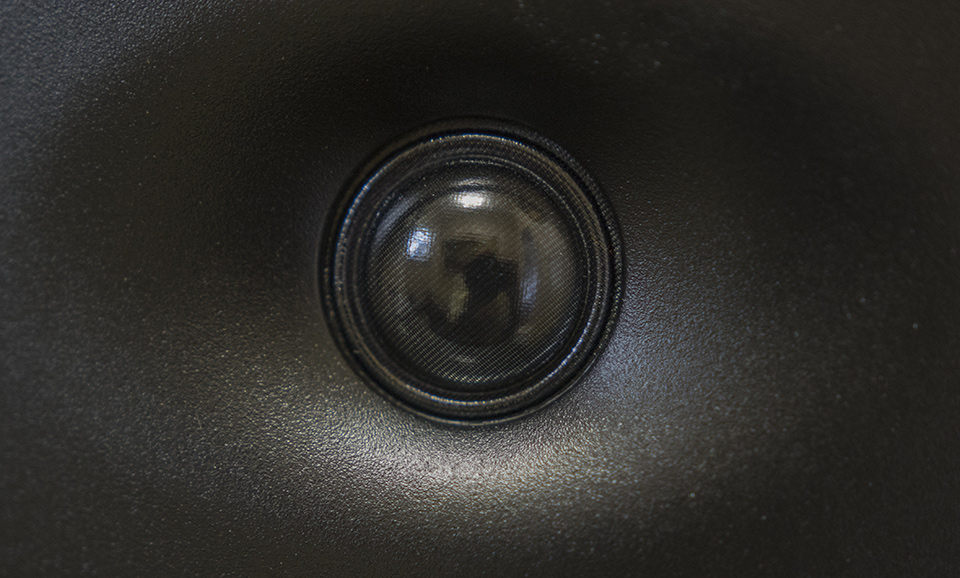
A 3/4 inch silk dome tweeter that looks very similar to the one found on Micca speakers. This one however has a slightly larger surround visible, and is mounted in a tiny oval shaped waveguide. This driver looks slimy, but the coating is well baked into the tweeter diaphragm and is not sticky. While it is a cheap tweeter, it appears to be well made.
Woofer
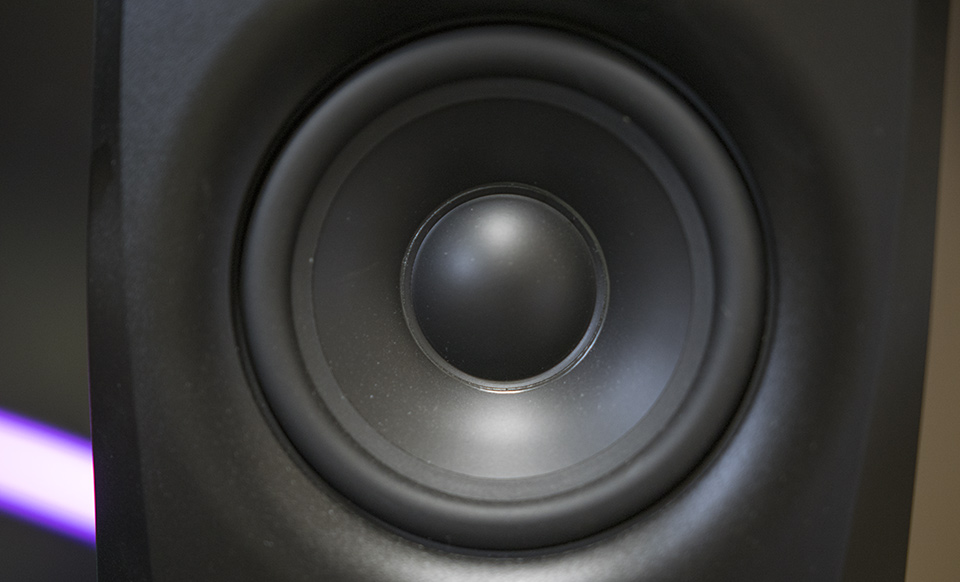
This driver is a little large for a 4 inch driver. The woofer material is either a poly propylene or painted aluminum cone. I would guess aluminum based on Hi-Vi's affinity for that material. For the size of the driver, the surround is pretty thick and made of a soft butyl rubber. Happy to report that the dust cap is not inverted, instead it is a nice regular shape and proportional size.
Input/Output and Controls
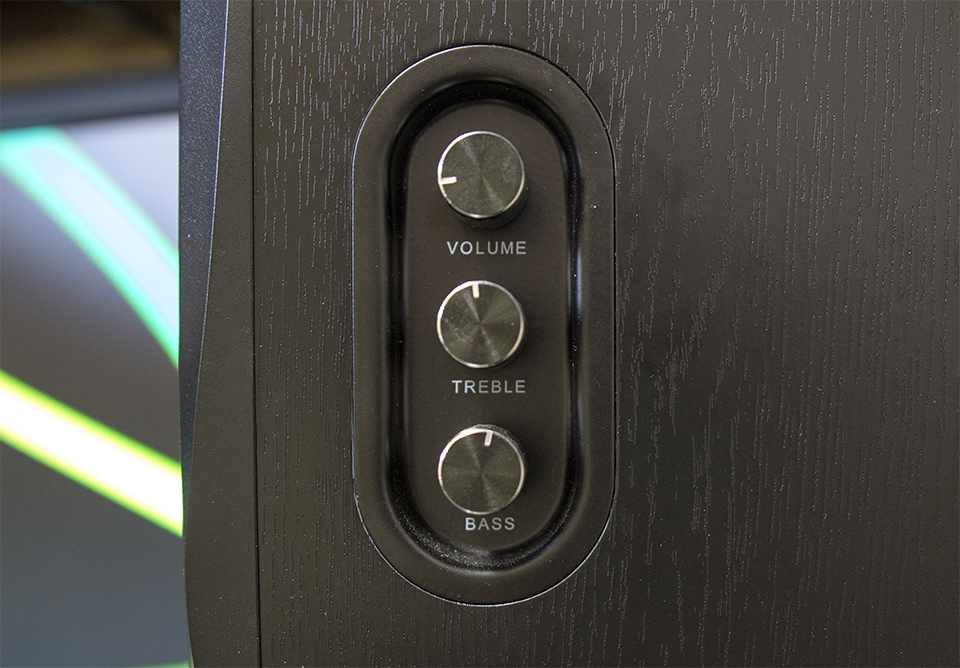
Tone controls are located on the outside of the right-hand speaker. This means that you cannot see them from a seated position and have to operate off of memory when adjusting from the listening position. The controls seem smooth enough and have small detents for centering the tone knobs to a flat/default position. The detents were mounted slightly off from center on my pair of speakers, but this did not affect performance.
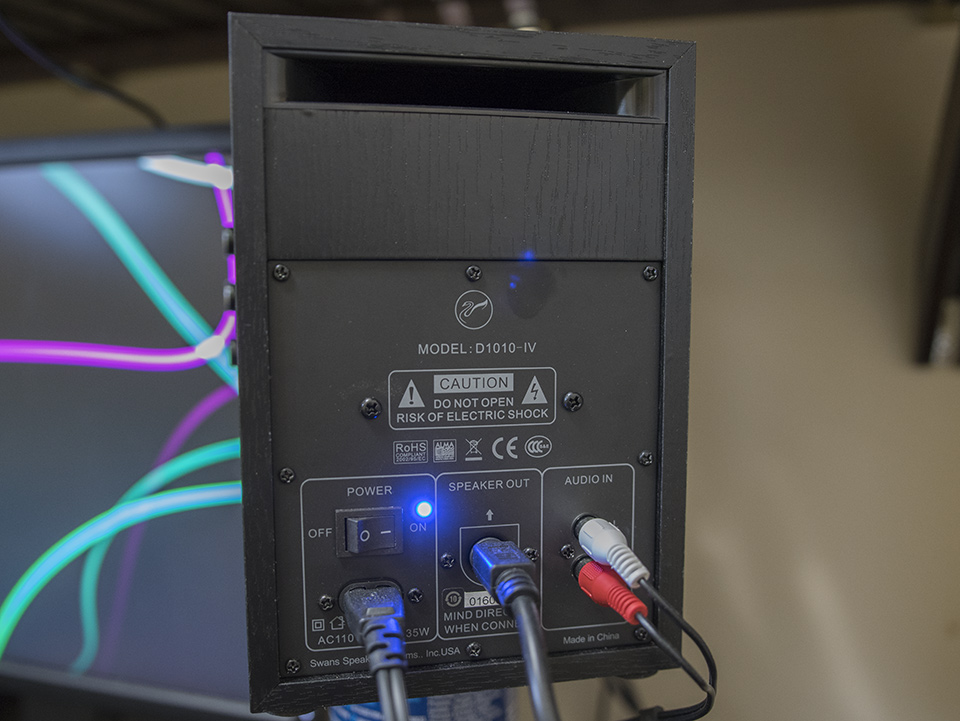
The rear has a detachable power cord that runs A/C directly to the right speaker. The Swan D1010-IV speakers have an internal power supply, so there is no wall wart to deal with. The audio input is handled by Stereo RCA connectors, and if you want to use anything else you are going to need an adapter. The speaker cable is a 4 wire custom DIN type connector. This is because the Swans are active biamped, one pair of wires is for the tweeter, and another for the woofer. The power switch is a toggle of good quality, and outputs a bright blue light from an LED on the back of the right speaker. Setup of the system went smoothly and I had no issues with interference from RF, volume control, or ground noise while reviewing.
Also take note of the slot port which is flared. I required at least 5.5 inches behind the D1010-IV to keep the midbass from being boomy. This will put the front of the speaker about 14 inches from the back wall.
Plate Amp
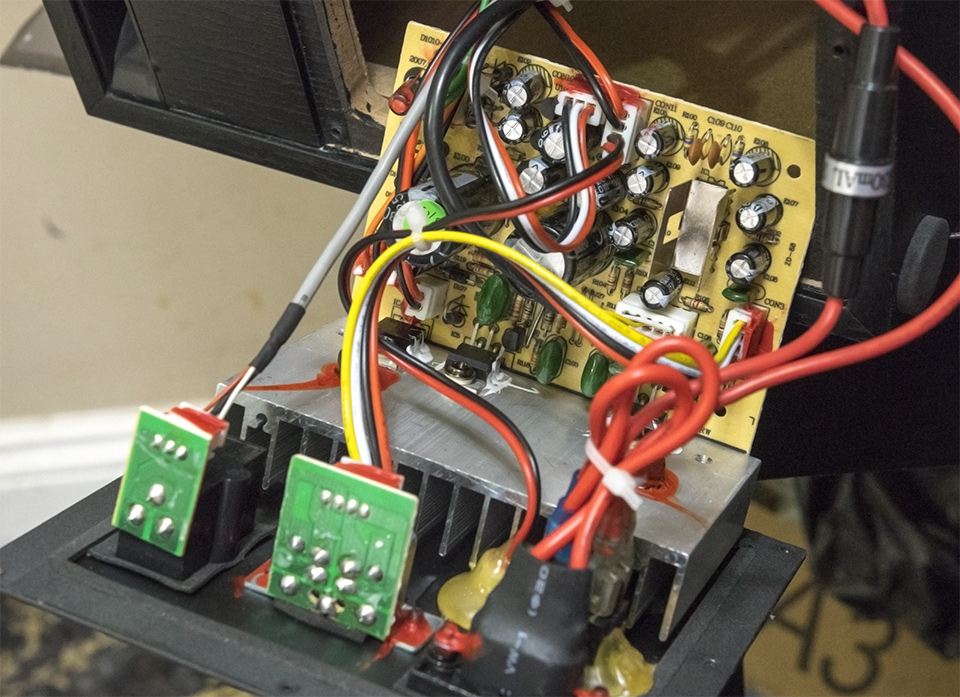
The amp appears to be a 4 channel Class A/B, and does run warm. I could not see any model numbers on any of the amp chips, but there are three of them. I would guess two run in bridge mode for the woofers, and a separate one for the tweeters. The power supply is a iron core transformer typically found in wall warts, with some, large for the job, smoothing caps. Everything on the board looked to be of good quality and all of the soldering was nicely done.
One thing that I liked to see was an in-line fuse on the A/C line and RoHS compliance. I can't guarantee that the RoHS isn't counterfeit, but this speaker looks like safety was at least considered.
I'm not above sacrificing personal safety for good cheap sound, but far too many cheap amps and powered speakers look like fire hazards when you open them up, and many when you plug them in.
Crossover
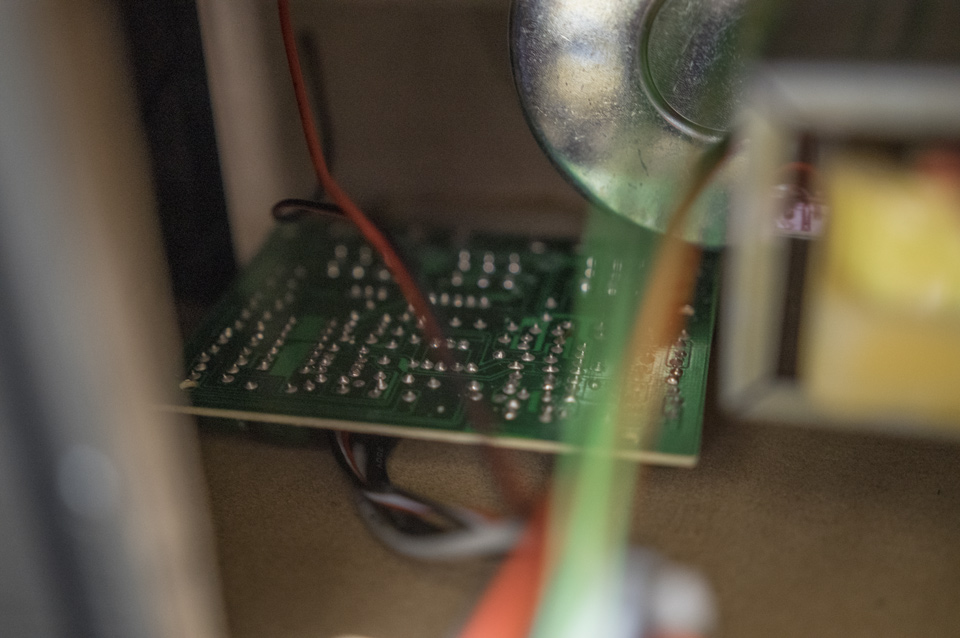
The Swan D1010-IV is a 2 way active design, so the crossover takes place with the low level signal, before amplification. While I could not get it out of the cabinet to eye ball it, the crossover appears to be happening on the tone control board. My guess is a small DSP chip of some sort, that does tone and crossover duty. If that's the case, this would be the cheapest DSP based speaker I've reviewed. Coming in at half the price of the Definitive Technology Incline.
Cabinet
The short stout cabinet is made of a thin MDF that sounds very hollow when tapped. I could not find any way to remove the plastic front baffle, and it appears to be glued into place. The waveguide looks more like a aesthetic dent in the front of the baffle than anything purposely designed for acoustic reasons. Also, the tweeter being that close to the top of the speaker is probably going to cause problems. The rounded edge covering the woofer's frame is nice, but it leads to sharp edges on the side of the baffle. It would have been nice to see a taller baffle to move the tweeter at least 2.5 inches from the top, and I would have liked to see a large round over when transitioning from the baffle to the side of the cabinet. Also, either recess the tweeter waveguide enough to physically time align the drivers, or make the tweeter baffle flat. I see no reason to do it halfway.
Grills
Grabby posts on the pull off grills are prone to pulling out the rubber bushings. Other than that the grills are a chainlink fence pattern of plastic that will get in the way of the sound. I recommend not using the grills.
Listening Notes:
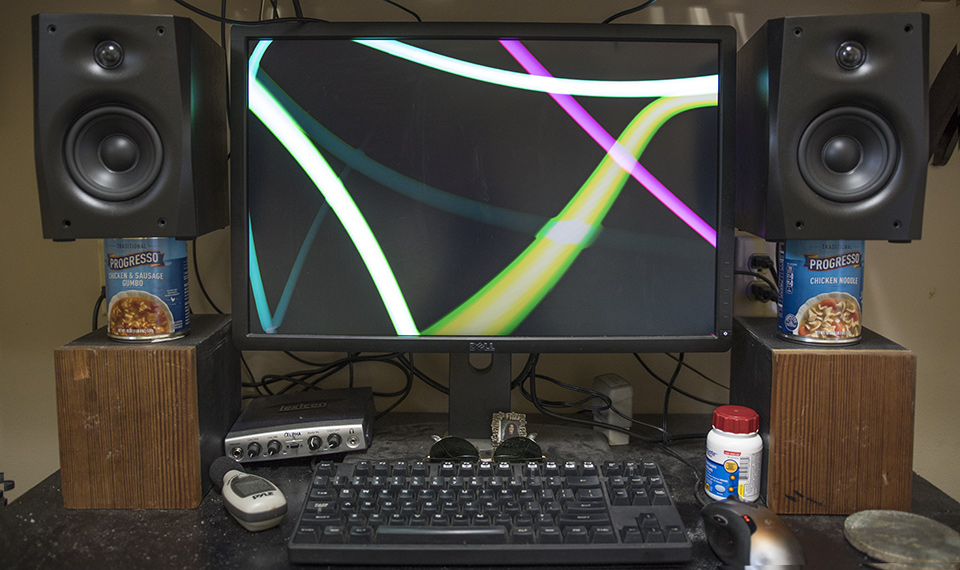
The speakers are too short, and the tweeter is too close to the top of the box. This makes for some nasty diffraction starting at 9k, and sounds like it continues all the way down to 6.5k The only cure for this is to get the speakers way up. Move the baffle top reflection so that it will diffuse in the room instead of being in the line of sight. I ended up with some soup cans on top of my speaker stands with bluetack holding it altogether, and the sonic benefits far outweigh the aesthetic costs. If I was going to do a more permanent solution I would probably just remove the labels on the cans and hit them with some spray paint.
Set to flat the speakers are too bright. The tone controls seem reasonable in that they don't do too much. I would guess a +-2dB range from the knob.
Turning the treble all the way down makes the speaker more balanced, and it still has issues with the midrange.
Tweaking the treble to flat and bass all the way up sounds exactly like the bass flat and treble down.
There is no audible cone breakup. The speaker's crossover is working correctly.
The speakers sound pretty damn good compared to other powered speakers, but tonal issues with the treble being sparkly and the bass not being as deep as I would like. There is room for improvement with DSP.
Measurements
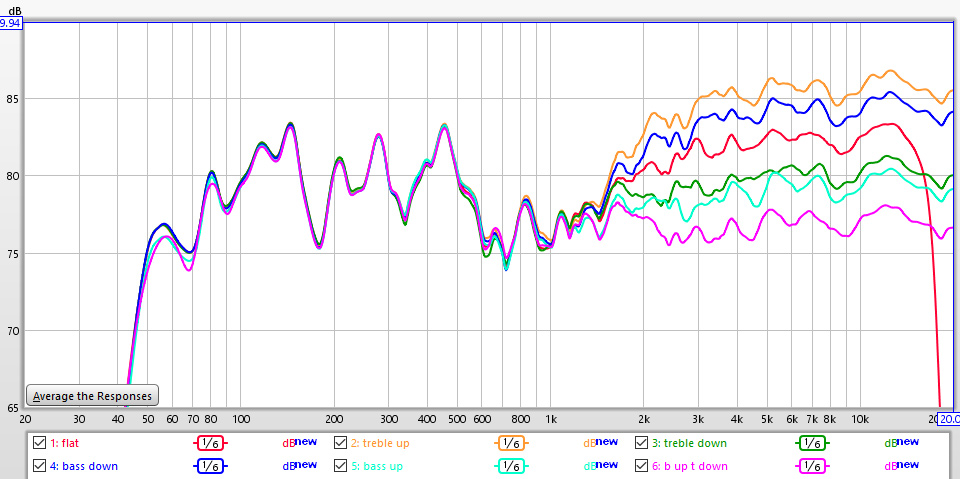
These measurements were taken indoors away from walls, on axis with one speaker and is most accurate above 800Hz with the bass response being representative of the tone and extension that I heard from the Swan's while testing. I lined up the tone control measurements to all be equal volume for the bass response. This shows the true tonal options available in terms of treble level. The closest tonal accuracy is with the treble set all the way down, and bass set to flat. The only way to get rid of the hole in the midrange is to set the treble down and bass up, this makes for a very soggy overdone midbass. The bass extension starts to fall off around 100Hz and ends up down about 6dB by the time it hits 50Hz.
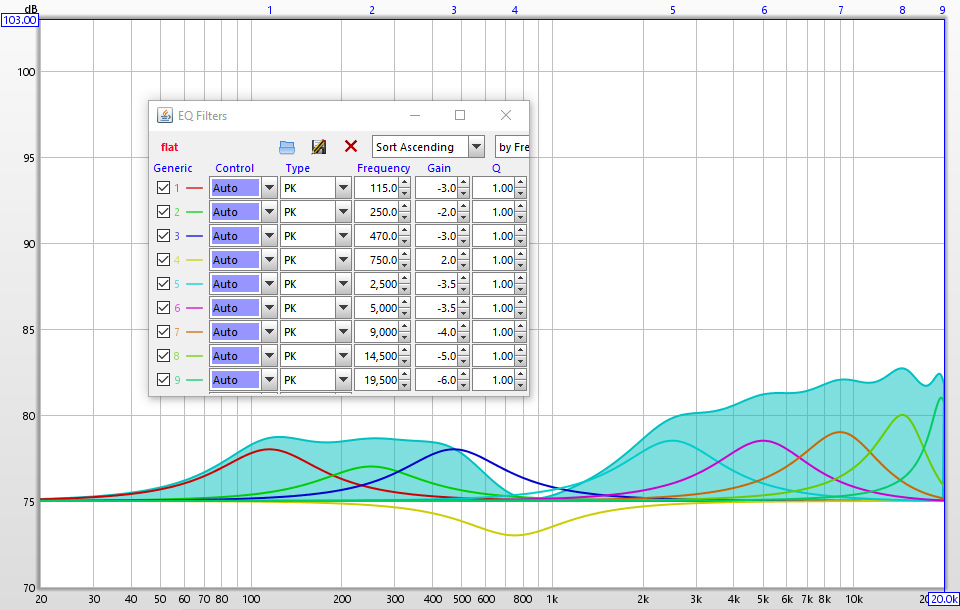
I set the speaker to flat and worked on this correction for a solid month. Ended up with a very simplified and smooth correction that will work regardless of small variations that happen when making speakers at this price point. The Swan D1010-IV's sound very good now, and even sound passable without them up on super tall stands. Remaining issues have to do with limitations of the physical dimensions of the speaker. This is mainly evident in the dispersion of the 3/4 inch dome tweeter which is a little sparkly in comparison to a 1 inch dome.
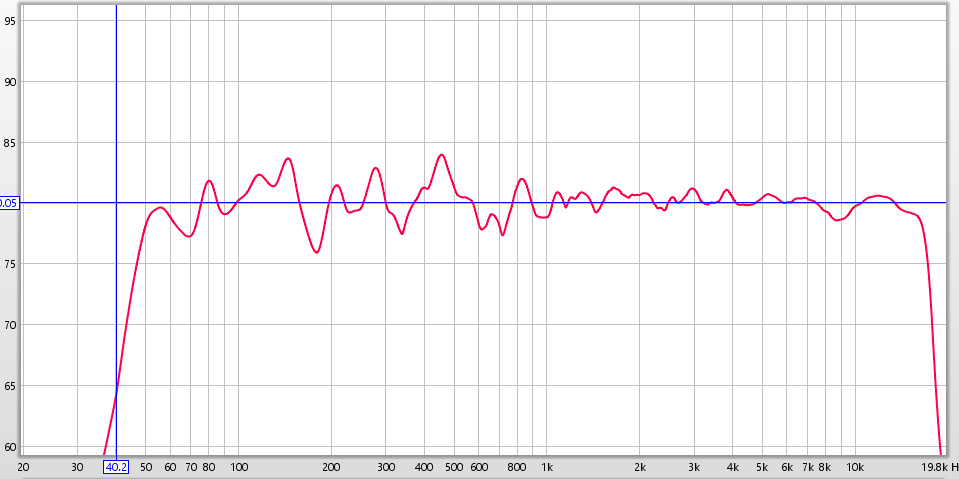
The result of the corrections are very good. The off axis behavior only has a 2dB hump between 2-8k, this is pretty good for a dome tweeter in such a small baffle.
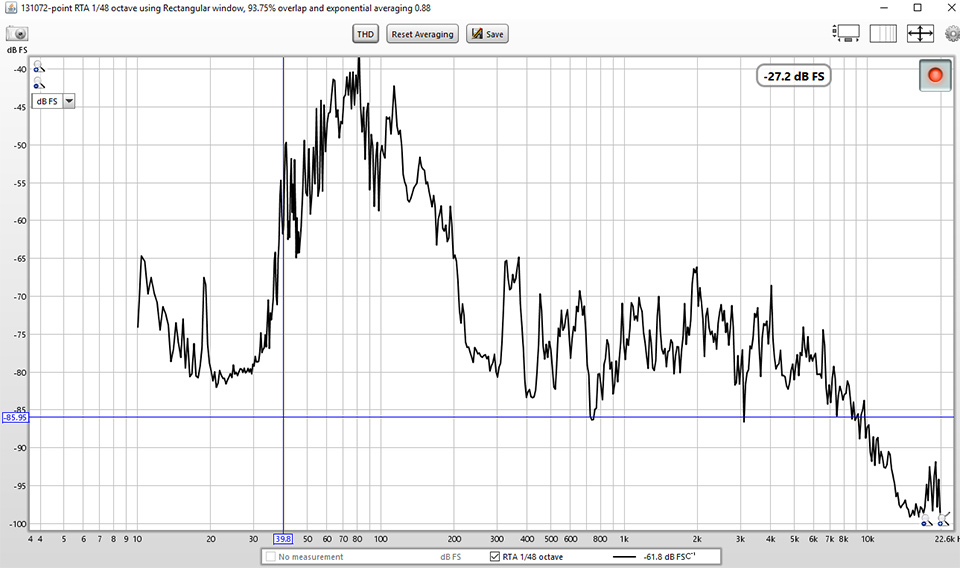
In-room bass extension, located 5.5 inches from the rear wall gives very good results with a flat to 50Hz and has usable extension to 40Hz.
Final Thoughts:
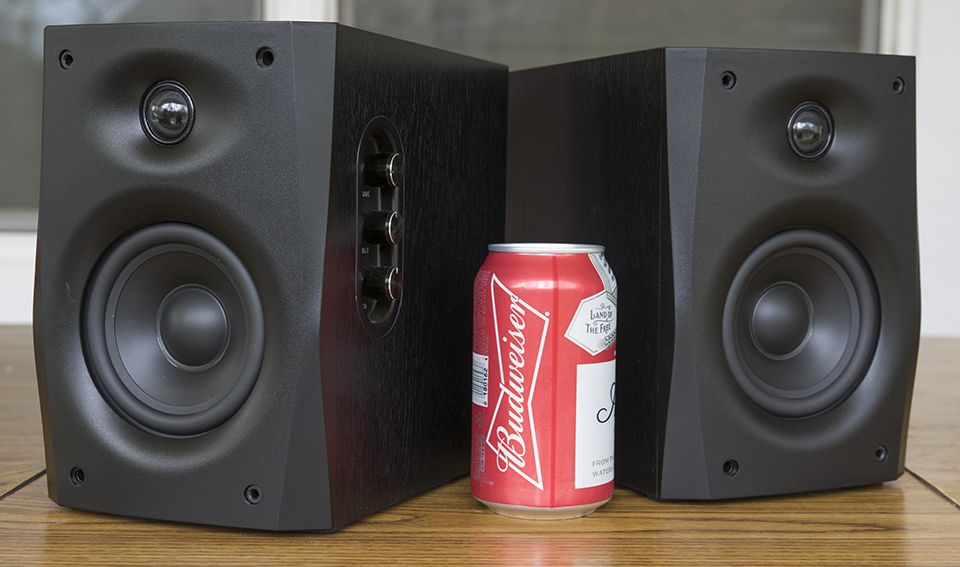
In stock form the sound is +-3dB from flat, with a little bit bright rising response, a hole in the midrange, lumpy midbass, and not enough bass extension. The D1010-IV has by far the best build quality in the $100-$150 range, and even without DSP Correction is a pretty good speaker.
With the DSP correction this speaker will be everything most people need in a desktop setup. With a little bit of boundary gain the Swan D1010-IV's Frequency Response is +-1.5dB on axis from 50Hz to 20kHz.
Compared to the Micca PB42x, Logitech z623, M-Audio AV32, and Mackie CR3 The Swan D1010-IV are the speakers to get.
I cannot recommend the Swan D1010-IV speakers enough to cheap bastards looking for the best deal on the desktop, or audiophiles on a tight budget.
Click here to buy the Swan D1010-IV Speakers
Click here to get the DSP correction file for the Swan D1010-IV speakers.
Check out the system finder to see what I recommend.
Other content you may like:

